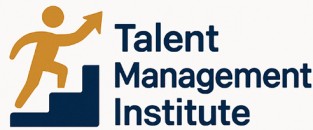
Understanding the Importance of Performance Review Goals
The Role of Performance Review Goals in Employee Development
Performance review goals are integral to enhancing employee development and driving organizational success. They are not merely a routine part of the performance management cycle; instead, they serve as crucial touchpoints that help employees understand the trajectory of their professional journeys within an organization. Setting clear and precise goals provides employees with a well-defined roadmap to follow, fostering a sense of direction and purpose. It acts as a guiding framework that not only boosts individual employee performance but also contributes to team and organizational progression. When aligned with company objectives, these goals can significantly improve employee engagement and overall workplace efficiency. Moreover, goals performance reviews create an invaluable opportunity for managers to offer constructive feedback. This feedback process is essential for identifying strengths and areas where improvement is needed, such as customer service skills or problem-solving abilities. Through proper performance reviews, employees become more adept at setting SMART goals, which are specific, measurable, achievable, relevant, and time-bound. Importantly, effective goal setting encourages transparency between employees and management, paving the way for open discussions about performance expectations. This transparency helps in tracking progress and makes it easier to celebrate achievements or address any performance gaps. To explore more on how to craft effective goals for performance reviews, you can visit this insightful guide that delves deeper into optimizing your performance review processes.Characteristics of Good Performance Review Goals
Key Traits of Effective Performance Goals
Setting clear and effective performance goals is crucial for enhancing employee performance and aligning individual efforts with organizational objectives. Good performance goals are not just about what employees need to achieve but also about how they can grow and develop their skills in the workplace. Here are some characteristics that define effective performance goals:
- Specific and Clear: Goals should be well-defined and unambiguous. Employees need to understand exactly what is expected of them. This clarity helps in reducing confusion and ensures that team members are on the same page.
- Measurable: It is essential to have criteria for measuring progress and success. Measurable goals allow both employees and management to track progress and make necessary adjustments along the way.
- Achievable: While goals should be challenging, they must also be attainable. Setting unrealistic goals can demotivate employees and hinder performance. It is important to consider the resources and time available when setting goals.
- Relevant: Goals should align with the broader objectives of the organization. This alignment ensures that employees' efforts contribute to the overall success of the company and enhance customer satisfaction and employee engagement.
- Time-bound: Effective goals have a clear timeline. Deadlines create a sense of urgency and help in prioritizing tasks, ensuring that employees remain focused and motivated.
Incorporating these characteristics into goal setting can significantly improve the performance review process. By focusing on these traits, organizations can help employees achieve their objectives and contribute to the overall development of the team. Additionally, providing constructive feedback and support throughout the process can enhance employee engagement and performance management.
Examples of Performance Review Goals for Different Roles
Goal Setting for Diverse Roles
Setting performance goals that accommodate employees in different roles is crucial to fostering an inclusive and productive workplace. The needs and expectations of various positions—be it in management, customer service, or technical roles—differ significantly. It's essential that performance goals are relevant to the specific skill sets and responsibilities of each position. This tailored approach not only helps in setting clear objectives but enhances employee engagement and motivation.
For example, in a customer service role, goals might focus on achieving high customer satisfaction scores, answering queries within set timeframes, or resolving issues with minimal escalation. Customer service employees could benefit from setting SMART goals—specific, measurable, achievable, relevant, and time-bound—that clearly define what they need to accomplish.
In management roles, performance goals might revolve around improving team performance, fostering a culture of feedback and development, or achieving organizational objectives. Here, setting performance goals that align with broader company objectives ensures that managers are working in sync with organizational priorities.
Technical team members, such as those in software development, might focus on enhancing problem-solving skills, meeting project deadlines, or increasing code quality. These goals should emphasize continuous development and the importance of tracking progress to measure success.
When setting goals performance evaluations will revolve around, it's important to incorporate feedback from previous reviews and build on areas of improvement. This approach also aids in guiding career development and ensuring that employees are equipped with the skills necessary to achieve their personal and professional aspirations.
Aligning Performance Goals with Organizational Objectives
Aligning Individual Goals with Broader Objectives
In the realm of performance management, aligning individual performance goals with the broader objectives of the organization is crucial. This alignment ensures that every employee's efforts contribute to the overall success of the company. When setting performance goals, it is essential to consider how these goals will support the organization's mission and strategic priorities.
Understanding Organizational Objectives
To effectively align goals, employees and managers must first have a clear understanding of the organization's objectives. This understanding helps in setting goals that are not only relevant but also impactful. For instance, if a company aims to enhance customer satisfaction, performance goals should focus on improving customer service skills and processes.
Collaborative Goal Setting
Collaborative goal setting between managers and team members can significantly improve employee engagement and performance. This process involves open discussions about what the organization aims to achieve and how each employee can contribute. By involving employees in the goal-setting process, they are more likely to feel invested in their work and motivated to achieve their goals.
SMART Goals as a Framework
Utilizing the SMART criteria—Specific, Measurable, Achievable, Relevant, and Time-bound—can help in setting clear and effective goals. SMART goals provide a structured approach that aligns individual performance with organizational objectives. For example, a goal to "increase sales by 10% in the next quarter" is specific and measurable, aligning with the company's revenue growth objectives.
Regular Review and Feedback
Regular performance reviews and constructive feedback are essential in tracking progress and ensuring alignment with organizational goals. These reviews provide an opportunity to assess whether the goals are being met and to make necessary adjustments. Constructive feedback helps employees understand their strengths and areas for improvement, fostering continuous development.
Avoiding Common Pitfalls
One common pitfall in setting performance goals is the lack of alignment with organizational objectives. Goals that do not support the company's mission can lead to wasted effort and resources. It is important to regularly revisit and adjust goals to ensure they remain aligned with the evolving objectives of the organization.
By aligning performance goals with organizational objectives, companies can create a cohesive and motivated workforce that is focused on achieving shared success. This alignment not only enhances employee performance but also drives the organization towards its strategic goals.
Common Pitfalls in Setting Performance Review Goals
Recognizing Challenges in Formulating Review Objectives
Setting performance goals comes with its own set of challenges. It's not just about deciding what needs to be achieved, but ensuring that the goals are realistic and align with both team and organizational objectives. Here are some common pitfalls to be aware of when setting goals:- Vague Objectives: One of the most frequent issues is setting goals that are too broad or ambiguous. To improve employee performance, management must ensure that objectives are clear and measurable. For instance, instead of saying "improve work performance," specify what tasks or skills need enhancement.
- Misalignment with Company Goals: Goals that don’t align with the larger organizational strategy can lead to wasted effort and frustration. Employees need to understand how their individual objectives contribute to the broader team and organizational aims. Aligning personal goals with the organization’s direction helps boost overall productivity and employee engagement.
- Overlooking Employee Input: Performance review goals must not be decided in a vacuum. Employees should have the opportunity to discuss and agree on reasonable targets. This involvement strengthens commitment and increases the likelihood of achieving the set objectives.
- Inconsistent Performance Evaluation: Without a consistent approach to performance management, evaluating goals can become subjective and biased. Setting performance standards and ensuring they are uniformly applied across team members helps deliver constructive feedback based on tangible results.
- Ignoring Development Needs: Goals focused purely on outcome rather than on skills development can hinder long-term growth. Fostering an environment that encourages learning and improvement supports employees in achieving both their short-term and long-term goals, enhancing overall workplace performance.
Using Technology to Enhance Performance Review Processes
Embracing Technology for Enhanced Performance Review Processes
In today's fast-paced workplace, leveraging technology can significantly enhance the performance review process. Modern tools offer a variety of solutions to streamline goal setting, track progress, and provide constructive feedback to employees effectively. Here, we explore how technology can support your performance management efforts.- Automated Tracking: Technology enables the seamless tracking of employee performance goals, making it easier for managers and team members to stay aligned on objectives. Automated systems can provide real-time updates and reminders, ensuring that goals are consistently front of mind and that progress is regularly monitored.
- Centralized Performance Data: Digital platforms centralize all performance-related data, encompassing everything from completed tasks to customer satisfaction metrics. Such a central repository aids in efficient performance reviews by providing a holistic view of an employee's contributions and areas for improvement.
- Facilitate Constructive Feedback: Regular feedback is key to employee development. Technology can facilitate continuous feedback loops, allowing for immediate input and minimizing the potential issues of yearly performance review discussions. Employees benefit from timely insights, enabling them to adjust their skills and focus areas proactively.
- Integration with Organizational Objectives: Many tech solutions offer features that help align individual performance goals with broader organizational objectives. This alignment ensures that employee development contributes directly to the company's success, a principle outlined in setting clear performance goals.
- Enhancing Employee Engagement: By making performance reviews more interactive and engaging, technology can improve employee engagement. Tools that provide visual representations of goal achievement, for example, can motivate team members and encourage a culture of achievement and recognition.
- Data-Driven Decision-Making: Advanced analytics embedded within many performance management platforms assist managers in making informed decisions. By identifying trends, skills gaps, and potential areas for development, management can craft more effective improvement strategies.













